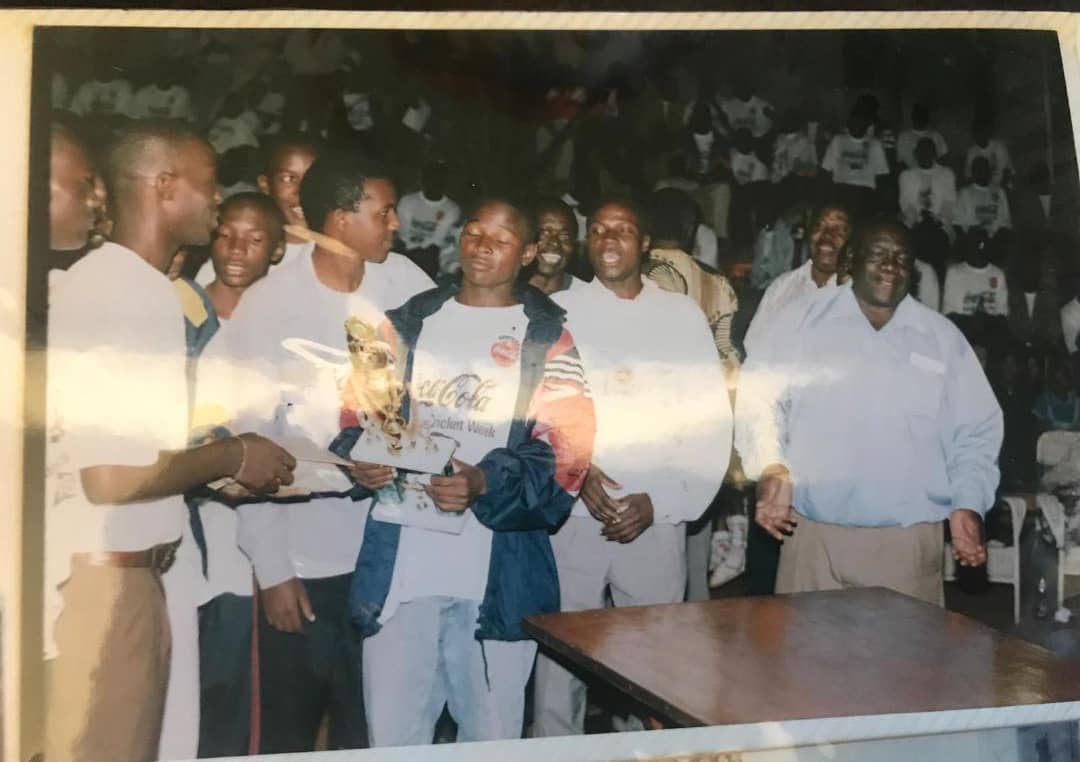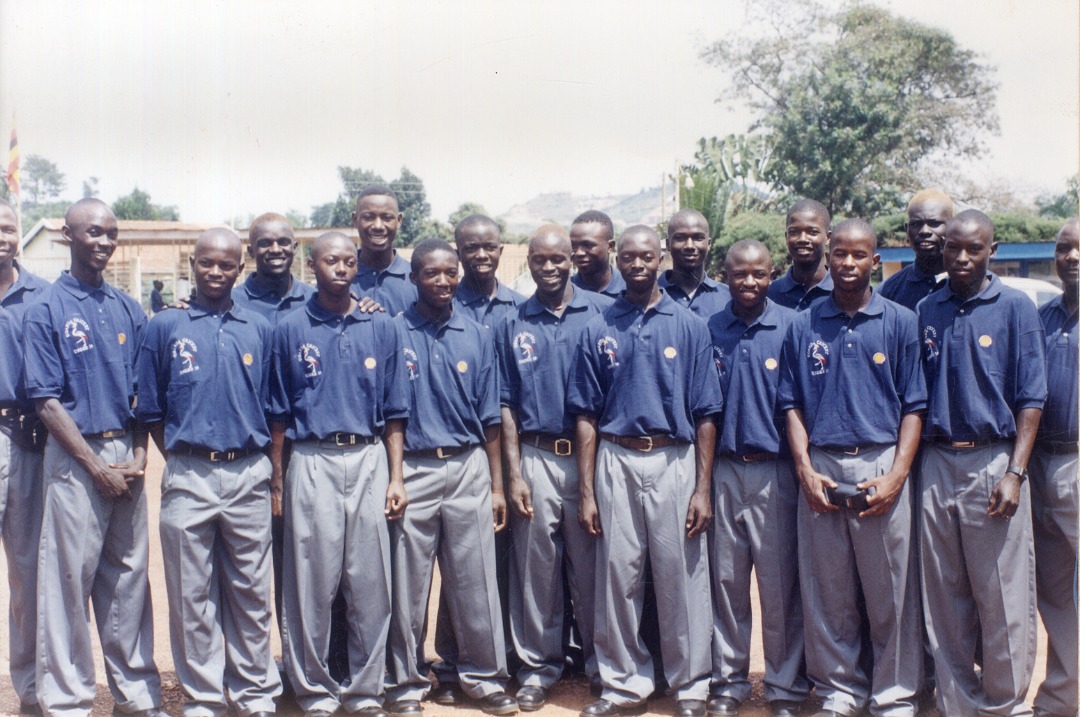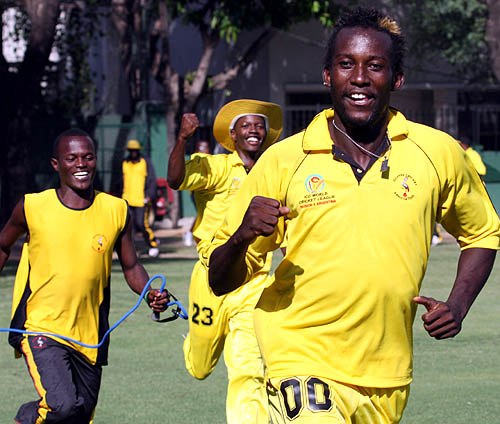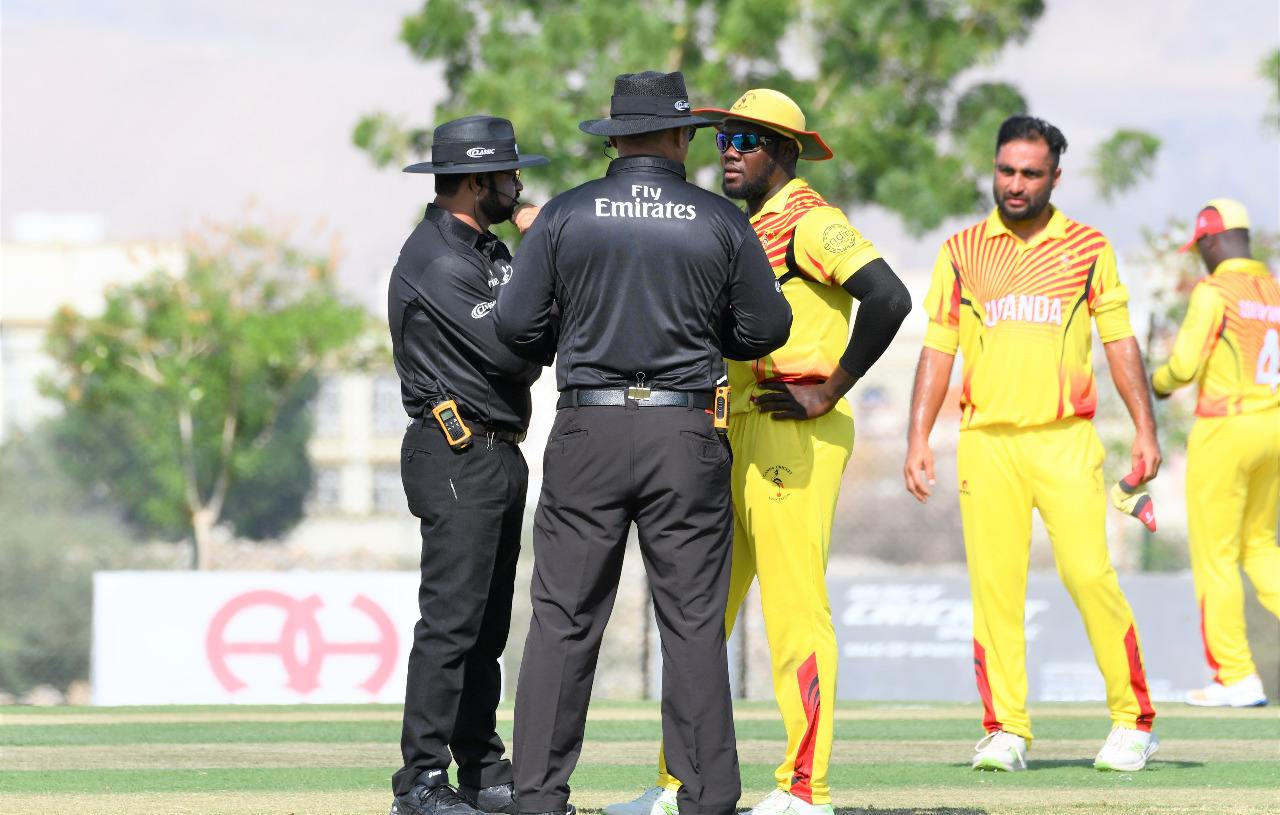By Adonia Waibale
If you’ve been around Uganda Cricket for a while, you will not find William Kibuka Musoke or Sam Walusimbi to be sights for sore eyes. If you’ve never met either of them, when you find yourself on a Cricket ground in Uganda, look around for the two oldest men. Often draped in canvas shoes, casual garb with a jovial disposition. And if you still can’t identify them, look around for a senior citizen demonstrating how to play a cover drive and another one throwing laser sharp sledges at whomever he deems to be in urgent need of a morale depletion.
If you hang around the two gentlemen you will not hear much about the political climate in Uganda or the economy that lingers in a tailspin.
Perhaps an odd comment about Manchester United from Sam Walusimbi.
But what you will hear in spades is regaling stories about the history of Uganda Cricket. Kibuka Musoke and Walusimbi are literally moving encyclopedias of Uganda’s Cricket partly because they were there when Uganda cricket made its maiden baby steps.
They have seen Uganda Cricket through some turbulent times. What you can’t take away from them is the fact that both played a pivoting role in putting Uganda Cricket on the world map, at a time when Athletics and football were the staples. At a time when it was impossible to deaf out chants of John Akibua and Denis Obua, they did well to give Uganda Cricket a resounding voice.
Both gentlemen played for the glorious East Africa Team that toured England in 1972. Sam Walusimbi played in the 1975 World Cup and might be the only Ugandan of his generation and ours to have played against tier one cricket powerhouses such as New Zealand and England. In fact, if I had the flair for drama, I would call them the last of a dying breed. Dead breed even, I dare say! Their love for cricket can’t be questioned and while time and again, their reasons for loving the game have been matters of public debate, their passion and sacrifice for cricket ought to exonerate them. While Kibuka Musoke, a man of controversy was never phased by these preposterous comments, Walusimbi, who fancies himself a patriot, considers them dirt stains on his service to the game.
The two gentlemen who also once held the highest office in Cricket management are also founding patrons for some of the oldest Cricket clubs in Uganda. Tornado Bees and Wanderers CC have mentored many Cricket greats such as Kenneth Kamyuka, Joel Olwenyi, Henry Osinde, Roger Mukasa, and Davis Karashani, to mention only those who come mind with little labor.
If you spend just a minute with Walusimbi and Kibuka Musoke, you will be in danger of hearing how Uganda Cricket has retrogressed. After taking a keen eye, it will be very hard to disagree.
If you had told Walusimbi or Kibuka Musoke back then, that Uganda Cricket would be languishing in a recurrent state of limbo, characterized by near misses and bouts of bad luck; you would hear words like “over my dead body” or “God forbid.” That’s how much they believed in Uganda Cricket.
In hindsight, it seemed Uganda was on a fast track to ODI status, perhaps even to being cricket’s new crown jewel. But how did the tables turn? When did the wheels stop spinning? At what point did the Cricket Cranes lose the flight in their wings?
Death of the burgeoning Schools’ development Programme
In the early days, when cricket was only blossoming in Uganda, and largely thought of as a colonial sport, the game found early adopters in equally colonial set ups. These included schools and communities. But it was in colonial schools where it enjoyed unprecedented growth. After all, the numbers, the brains, and the will to play were not in short supply there. What I should be shy to say is that in these set ups, it was where you would find people who could afford the equipment.
A bat alone was seen to be school fees for a family of 4.
For a while, the game suffered from undertones of elitism and overtures of being a niche sport. Much like golf and tennis but certainly not to the detriment of the game. If anything, this was exactly what the game needed to set up the right roots. Suffice to say, Cricket had found a home in traditional schools like Kibuli SS, Busoga College Mwiri, Kings College Buddo, Makerere College, Ndejj SS, Ntare School and many more. Once every year, these schools faced off in a national tournament called the School’s Cricket Week.

Don’t mind the anti-climactic name, the tournament made up on the oval what it lost in the name. The quality displayed in the School’s Cricket Week foreshadowed great days to follow. This tournament came to be known as the biggest success for Uganda’s development agenda. Unbeknownst to many it would soon turn into a stone in Uganda Cricket’s shoe. A throwback of days long passed yet not surpassed.
The Schools’ tournament wasn’t only watched because of its sentimental value and how competitive it was, it doubled as recruitment season for many local cricket clubs. It was also from these schools that the crop that saw Uganda play in the 2004 and 2006 U-19 World Cups came from. I will also have you know that it was in the same world Cup where our boys hobnobbed with the likes of Eion Morgan, Alistair Cook, Liam Plankett, Martin Guptil, Tim Southe, Shakib Al Hassan, Keiron Pollard, Safraz Ahmed, Tim Paine, Rohit Sharma, Ravindra Jadeja, Angelo Mathews, and many others.

While some of these countries are considered to be powerhouses, the junior Cricket Cranes competed well. So, the sad question is, at what point did we go off the rails? At what point did we fall from the pile. While most of the players mentioned above have gone to win tournaments for their countries, what became of the Ugandan players of that era?
After 2010, the most important tournament in Uganda Cricket started to die. The kind of death that would make one wish the will for schools to participate in it had died with it. Because what followed only accelerated an already dying programme. Because of the undying desire for undeserved glory, schools moved away from developing their own talent to recruiting already developed talent with incentives such as bursaries. So young cricketers hopped schools to play cricket at the price of their own education. Suddenly the role education played in the molding of a cricketer started to wane. Since then the proverbial knife in the belly hasn’t stopped turning. Today, while there are more schools and youth playing cricket, very few come close to looking worthy of Frank Nsubuga or Charles Waiswa’s shoes. Certainly not Junior Kwebiiha, Benjamin Musoke or Kenneth Kamyuka.
The question is no longer which Cricket School upstage history, but which school will embarrass themselves the least! What is guaranteed is embarrassment for the players and the fans. Not sleek cover drives, heart stopping pull shots, jaw dropping catches and great fielding displays like it used to offer.
Death of the School’s development programme has been slow but sure and its side effects to this day manifest in the shallowness of Uganda Cricket’s selection pool.
Talent Drain
Many like me were gob smacked to learn that Henry Osinde would be leading the Canadian Charge in the ICC Division 3 World Cricket League that was hosted in Kampala in 2017. Osinde like Kenneth Kamyuka and Joel Olwenyi were Ugandan top tier cricketers who sought greener pastures in Canada.

That year Osinde proved to be the tactical difference between an embarrassment and a loss for Uganda. Canada finished a place away from the championship and Uganda was a spot to close to yet another dismal performance. While Osinde is just one man, he represents what I believe is the biggest reason why Uganda Cricket lacks the license to fly. However, Osinde was neither the first nor the last.
“Six Ugandans go missing in Canada,” was the headline of an article on cricinfo. The screaming headline didn’t only bring shame to the Ugandan badge, it spelled doom in rainbow colors. Six of our finest had jumped ship to go and try and make a life for themselves. Not because they didn’t love their country or cricket for that matter. They run away because they didn’t see a future with/in Uganda Cricket. The holes they left in the team haunt us to this day. The dilemma wasn’t that they had to choose between their future and cricket, the dilemma was that Cricket couldn’t offer them a real future and left them no choice but jump ship.
I can name at least a dozen players Uganda Cricket has lost in similar fashion. But I can name dozens more we’ve lost right here. Not in Canada or New Zealand. But right here in Kampala. We’ve lost more to education or a better paying job. To a family obligation and the sense of self-preservation. We’ve lost more players to the notion that Cricket can’t pay bills and nobody can ever live off cricket. We’ve lost more players to the lack of a reason to stay. A reason to believe. Not in just the dream to achieve ODI status but also belief in the system and the process.
The question we need to answer is “What does Cricket in Uganda offer a Ugandan beyond the trips and the stripes?” Herein lies our survival and therefore our elevation. Perhaps in answering these questions the Cricket Cranes will finally take off.
And while I applaud the ICC for funding the development of the game and spreading it to every corner of Uganda and the world. I can confidently say that development is no longer a problem for Associate nations. The bigger question today is, how you keep those already playing, playing. Those interested, interested.
